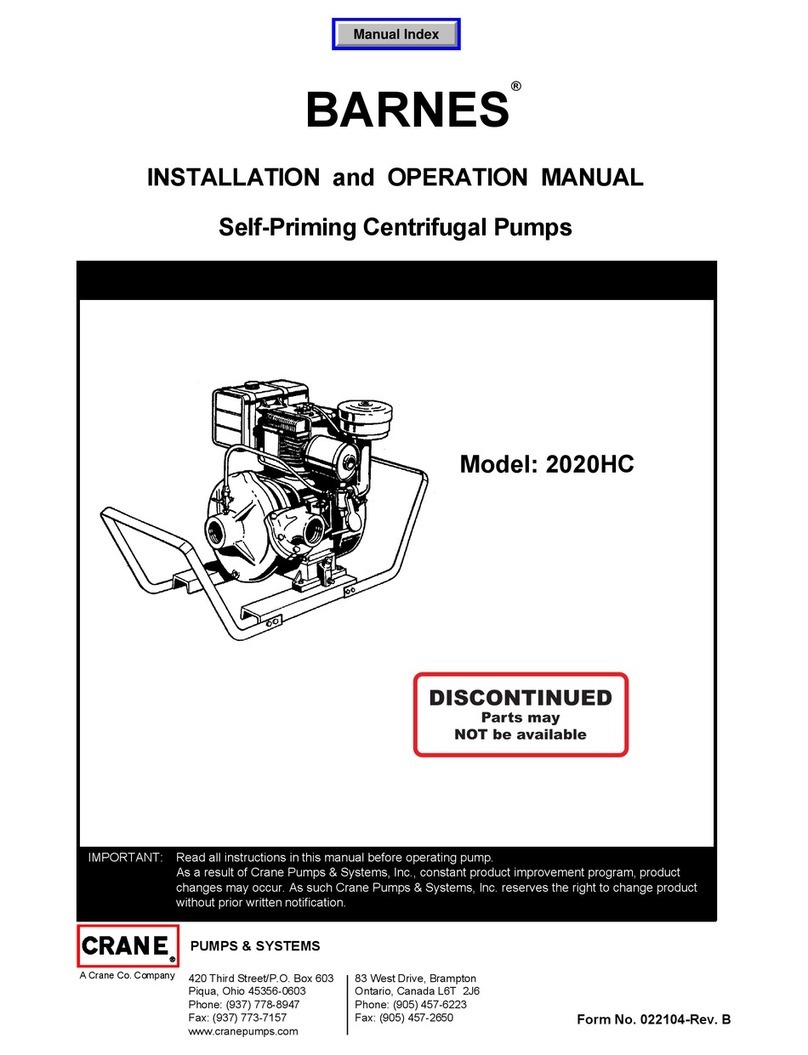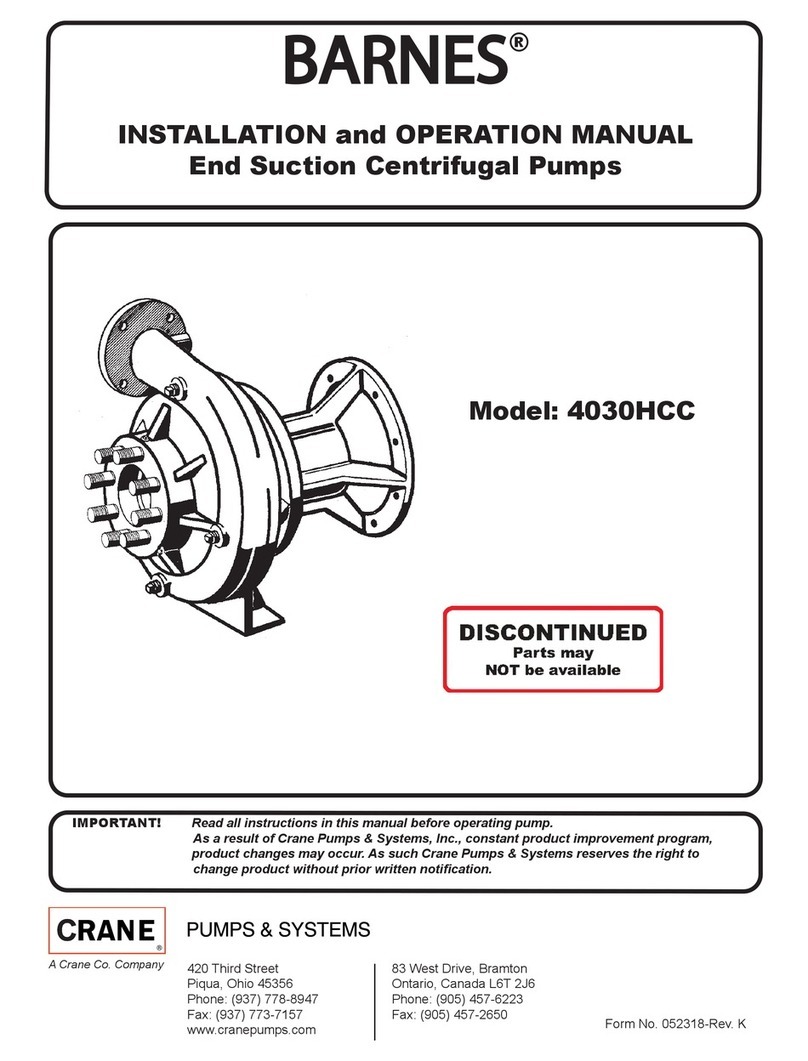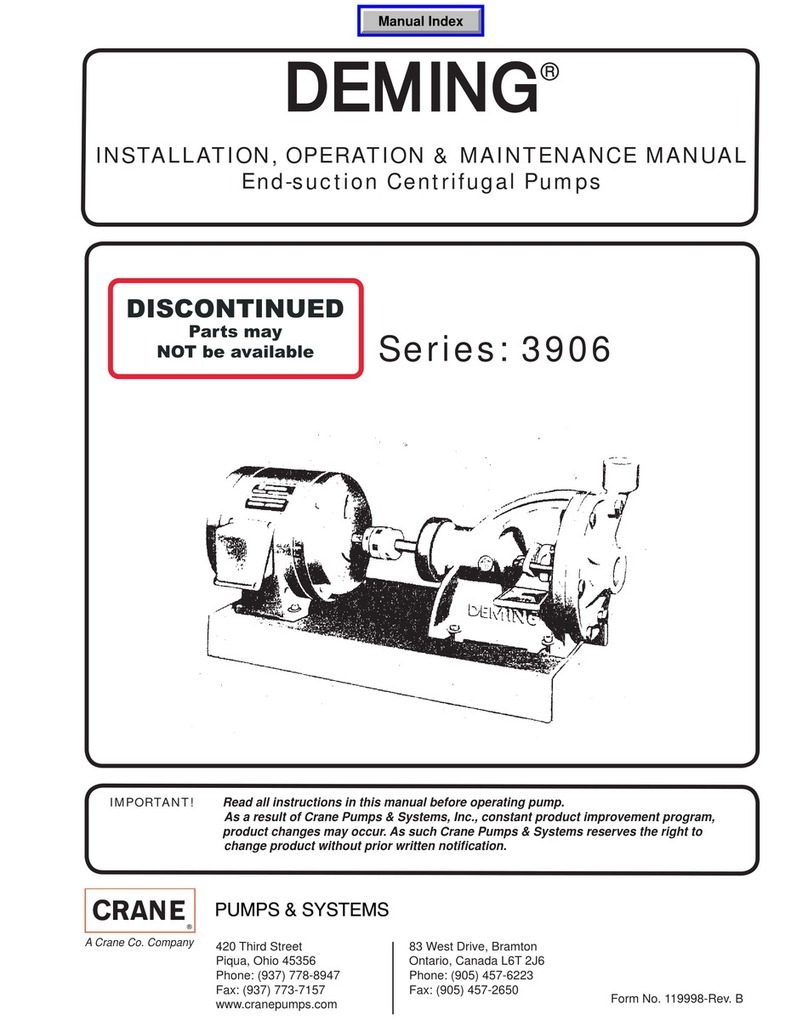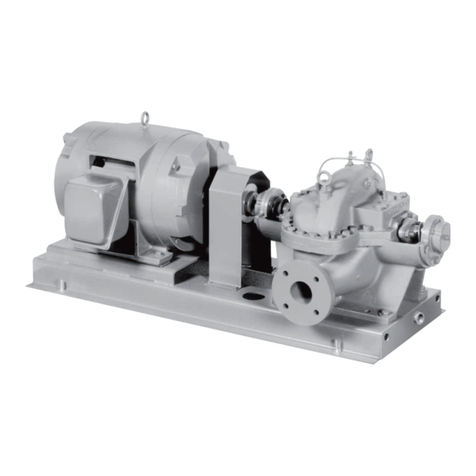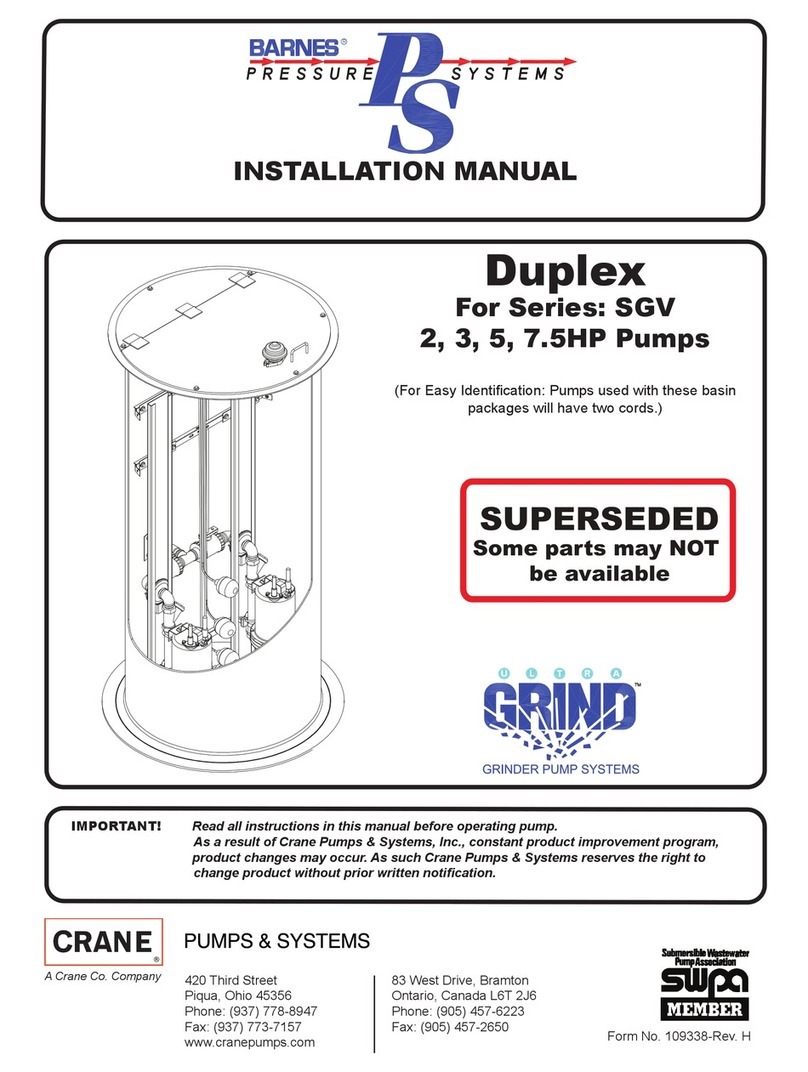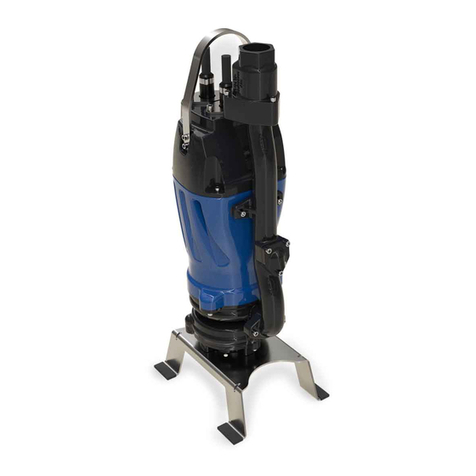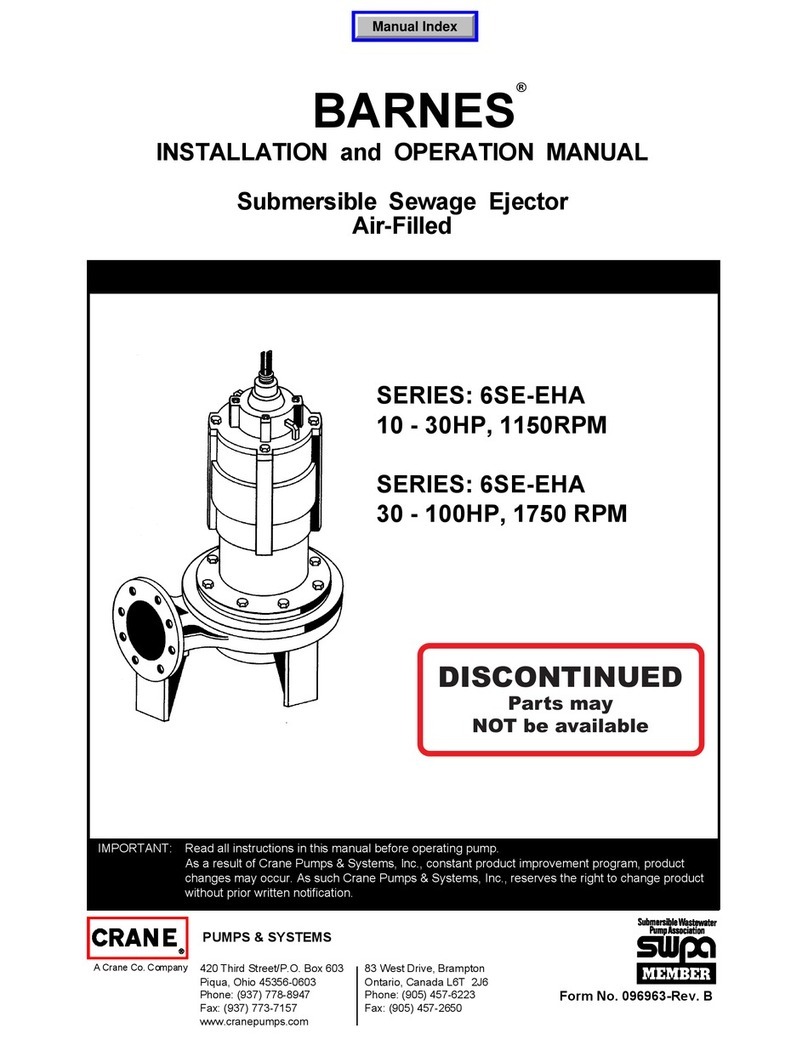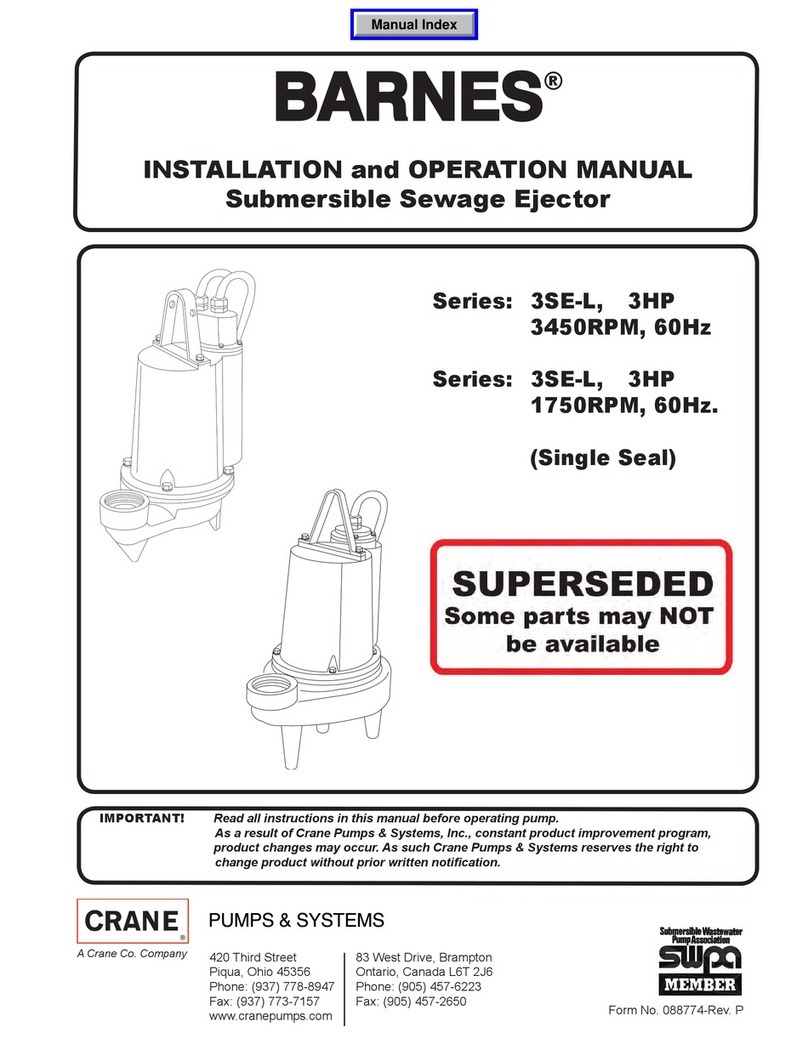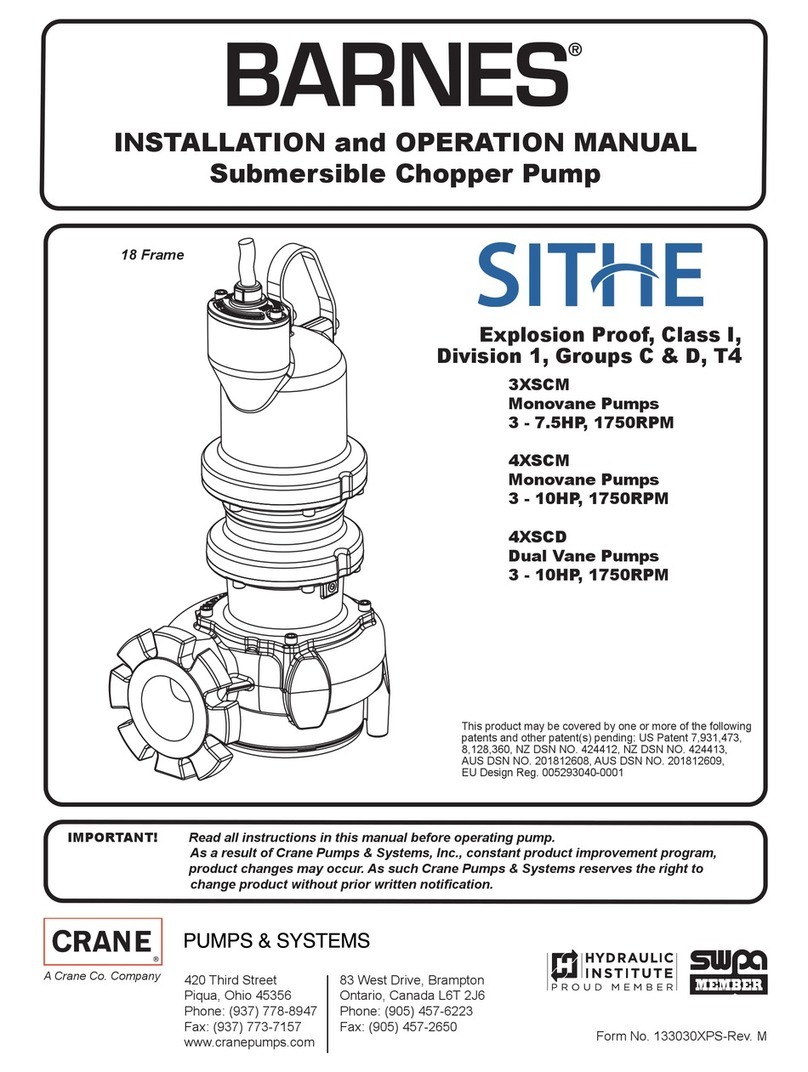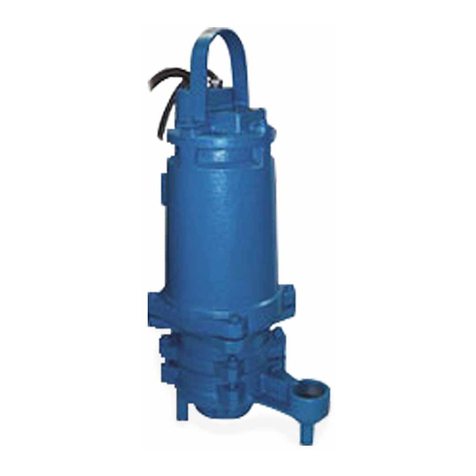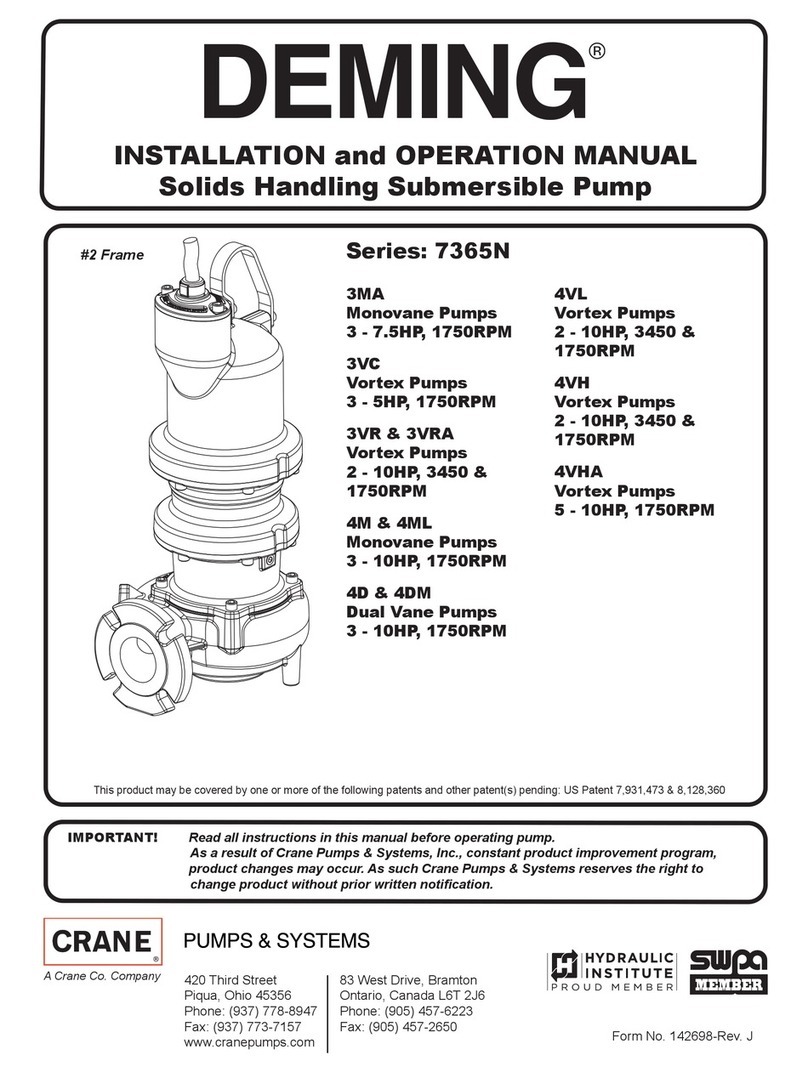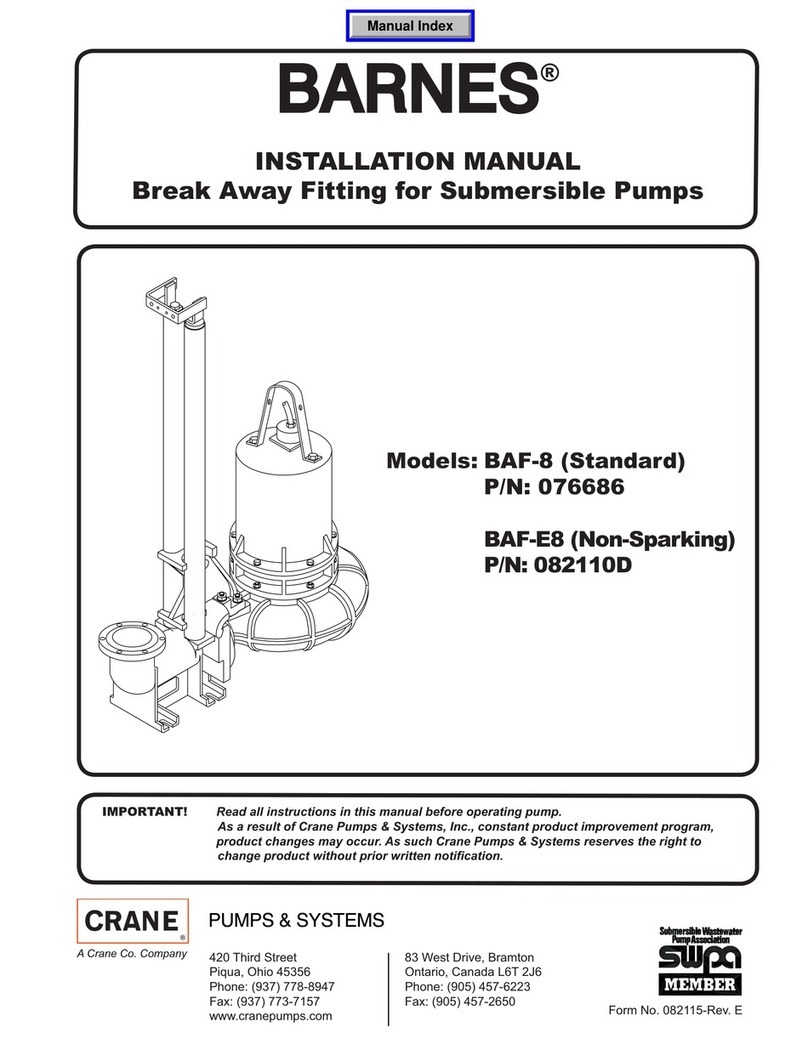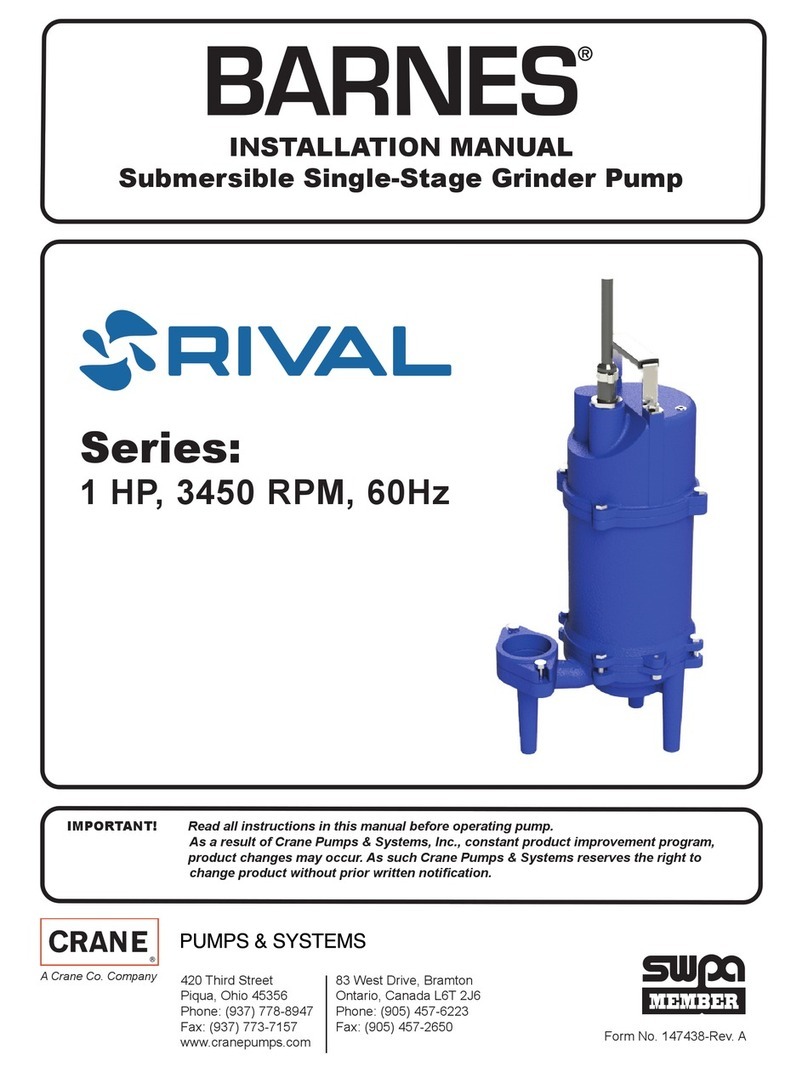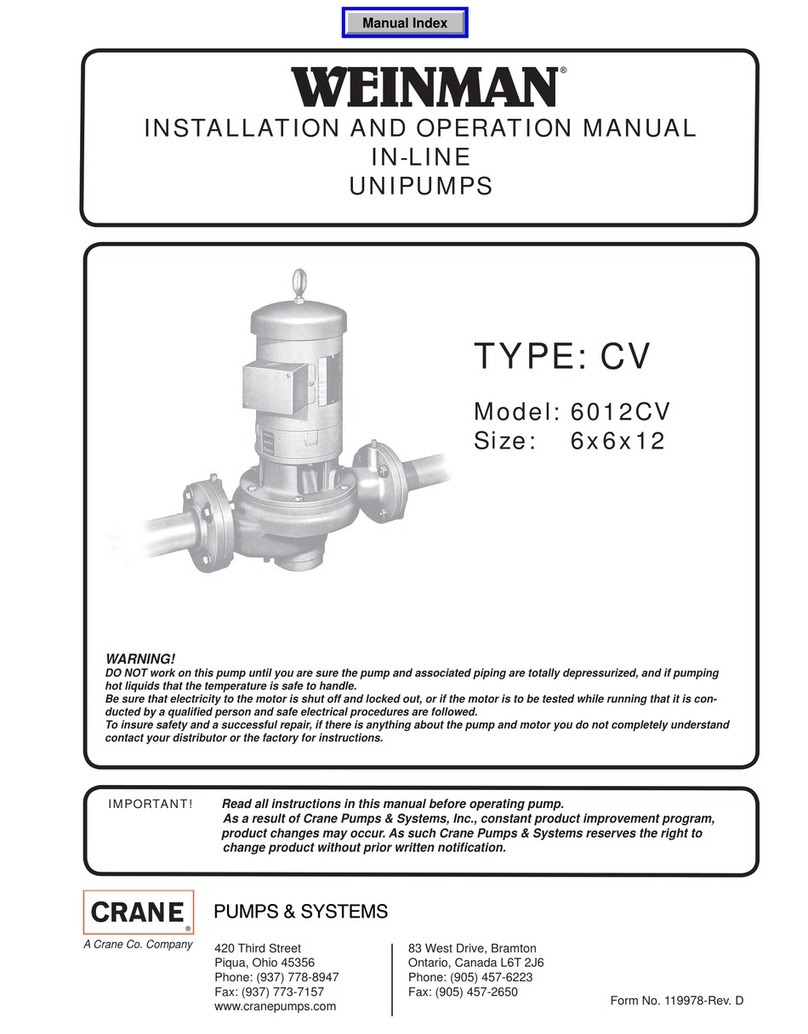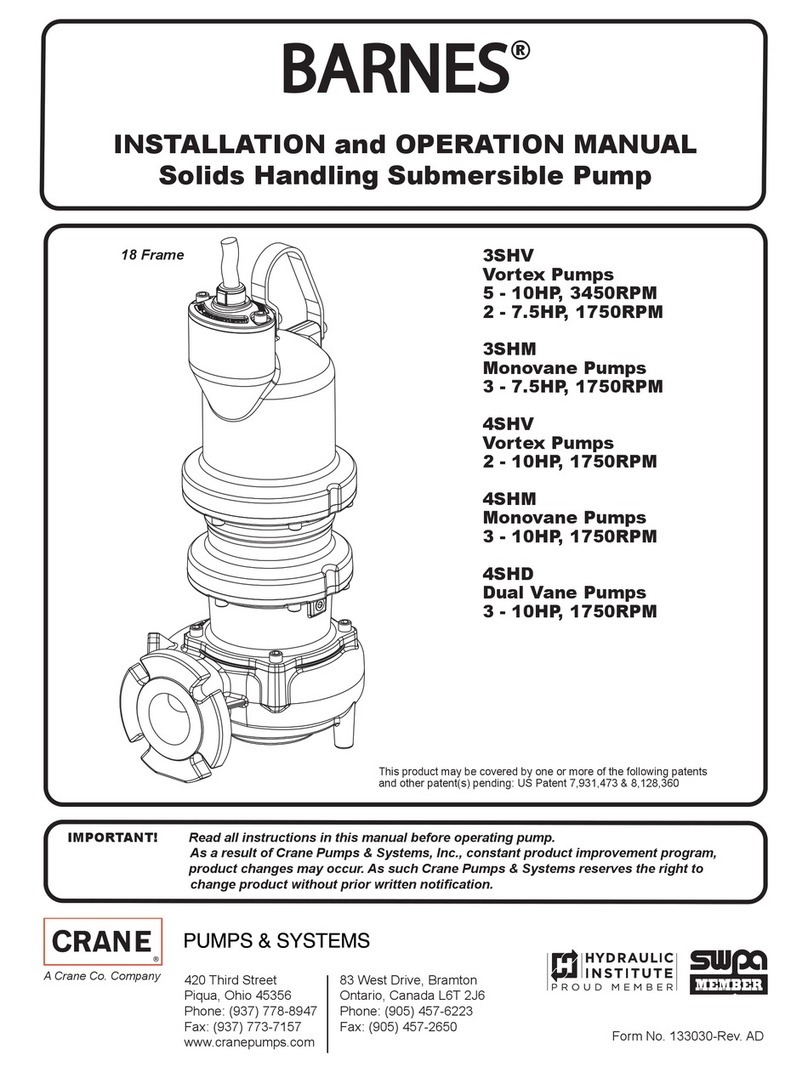
7
2. REASSEMBLY OF LIQUID END
a. Press suction head wearing ring (33) into recess
of suction head making certain that it is properly
seated. Also press the casing wearing ring (36) into
casing until it is flush with inside edge of casing.
d. Reposition motor support (1) on motor and replace
capscrews (8). Slide slinger (7) onto shaft, followed
by shaft sleeve until sleeve is tight against shaft
shoulder. Align shaft and sleeve keyways. Place key
(4) in keyway and position shaft sleeve gasket (12)
against end of sleeve.
c. Place stuffing box gland (16) and lantern ring (19)
over the shaft sleeve (3). Place stuffing box head
(15) over shaft in manner shown with slots for gland
bolts and nuts (8) on horizontal centerline when
holes in the flange of the stuffing box head are in
line with those of the motor support (1).
d. Insert casing capscrews (2) through holes in motor
support and stuffing box head and position stuffing
box head gasket (14) on stuffing box head. Position
casing (35) with discharge in desired position, and
tighten capscrews securely. Reconnect by-pass tube
(21).
e. Place impeller (40) over the end of the shaft with
keyway over the key (4). Tap impeller into position
on the shaft with either a babbit or rawhide hammer.
Replace impeller nut gasket (13) and impeller nut (6)
on shaft stud (5). Tighten nut securely.
f. Position suction head gasket (31) on suction head
(32). Mount suction head on casing and tighten
capscrews (9) securely. Replace drain plug (37).
g. See section “Repacking Standard Stuffing Box”
beginning with item b.
3. REPACKING STANDARD STUFFING BOX
a. Remove stuffing box bolts (17) and nuts (18) also
gland bolts and nuts and remove gland from shaft.
With a packing puller, remove the old packing (20)
and lantern ring (19) from the stuffing box.
b. Cut five rings of packing (20) so that when wrapped
around the shaft, the ends do not quite touch, a
bevelled cut is recommended.
c. Tamp first ring into stuffing box (15) then turn shaft
over by hand.
d. Stagger the next packing ring joint so that the joints
will be 180° apart. Seat ring evenly and tamp into
place. Turn shaft again by hand.
e. Place lantern ring (19) in next.
f. Position and seat the next three rings of packing
separately, staggering the joints 180° apart. Tamp
into place.
g. Replace split gland (16) fastening the two halves
together with gland bolts and nuts. Replace and
tighten stuffing box bolts and nuts (18), then loosen
nuts until shaft can be turned freely by hand. See
section “Proper Adjustment Of Stuffing Box” for
proper adjustment.
4. REPLACE SINGLE MECHANICAL SEAL - Seals are
available as a complete assembly only.
a. The single seal as shown is used for handling
clear liquids at temperatures below their boiling
point. A portion of this liquid is by-passed into
the seal chambers through the by-pass tube to
serve as a lubricant and as a coolant. The
by-pass from the pump discharge must be
a minimum of 20 pounds pressure above the
suction pressure of the pump to insure proper
operation of the seal.
b. Special precautions must be observed when
handling a mechanical seal. DO NOT drop the
seal face carbons, or floating seats, nor scratch
the lapped faces of these pieces.
c. To remove the seal assembly, dismantle the liquid
end of the pump as described in Section E. After
removing the casing, the seal head assembly
may be removed from the motor support. Press
the seal assembly (42) from the seal head (41).
d. To install new seal assembly, oil the outer surfaces
of the seal seat and press assembly into the seal
head cavity. DO NOT SCRATCH FACE OF
FLOATING SEAT. If it is not possible to insert seat
with the fingers, place cardboard protecting ring
furnished with seal over face of seat and press
into bore with piece of tubing having end cut
square. Tubing should be only slightly larger than
diameter of shaft. Remove cardboard ring after
seat is firmly seated.
e. Apply a thin coating of clean light oil to the shaft
sleeve (3) and reposition seal head (41) on the
motor support. Also apply a thin coating of light oil
to the inside of the seal bellows and the seal
face carbon then slide the sealing washer and
bellows assembly onto the shaft sleeve (3).
f. Insert casing capscrews (2) through holes in
motor support (1) and seal head (41) and
complete assembly of liquid end as described in
section “Reassembly of Liquid End”.
